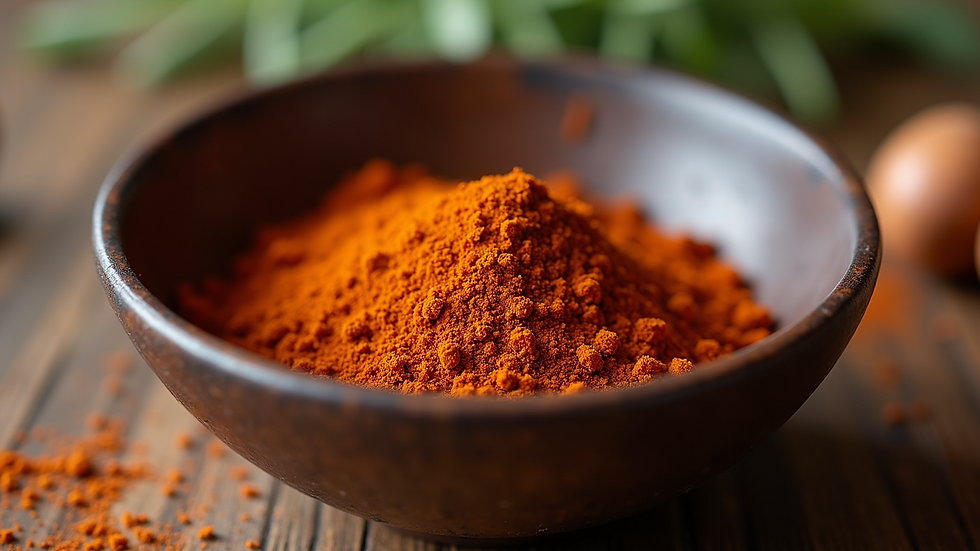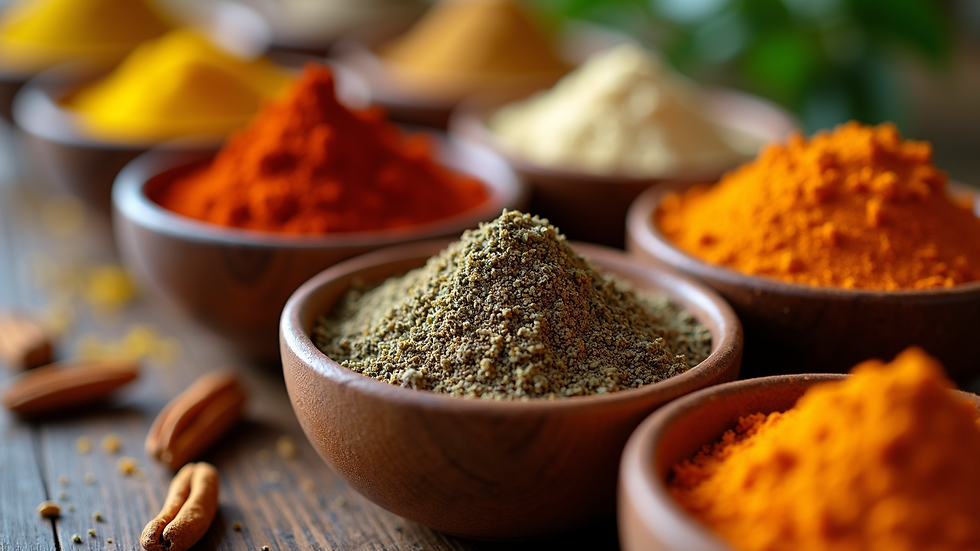Mastering Flavor with Meatheads Rubs
- Reweti Montgomery
- Sep 22
- 3 min read
When it comes to cooking meat, the secret to unforgettable flavour often lies in the seasoning. The right rub can transform a simple cut into a mouth-watering masterpiece. Whether you are grilling, smoking, or roasting, mastering the use of the best meat seasoning rubs is essential for elevating your dishes. This guide will walk you through everything you need to know about choosing, applying, and experimenting with rubs to get the most out of your meat.
Understanding the Best Meat Seasoning Rubs
The best meat seasoning rubs are blends of herbs, spices, salt, and sugar designed to enhance the natural flavours of meat. They come in many varieties, from sweet and smoky to spicy and bold. Knowing what each ingredient contributes helps you select the perfect rub for your cooking style and the type of meat you are preparing.
Key Components of Meat Rubs
Salt: Enhances flavour and helps retain moisture.
Sugar: Adds caramelisation and balances heat.
Paprika: Provides colour and a mild smoky taste.
Chili powder: Adds heat and depth.
Garlic and onion powder: Boost savoury notes.
Herbs: Such as thyme, oregano, or rosemary for aromatic complexity.
Using a balanced rub ensures your meat is seasoned evenly and deeply, creating a crust that locks in juices and adds texture.

How to Apply the Best Meat Seasoning Rubs for Maximum Flavour
Applying rubs correctly is just as important as choosing the right blend. Here are practical steps to get the best results:
Pat the meat dry: Moisture on the surface can prevent the rub from sticking.
Generous application: Don’t be shy—cover the meat evenly with the rub.
Massage the rub: Use your hands to press the rub into the meat for better adhesion.
Rest time: Let the meat sit with the rub for at least 30 minutes, or refrigerate overnight for deeper flavour penetration.
Cook as desired: Grill, smoke, or roast according to your recipe.
For example, a thick pork shoulder benefits from a heavy rub and long resting time, while a quick steak might only need 30 minutes before cooking.

Exploring Different Types of Meat and Their Ideal Rubs
Different meats respond uniquely to various rubs. Understanding these pairings can help you master flavour every time.
Beef
Beef pairs well with bold, smoky rubs featuring black pepper, garlic, and smoked paprika. For brisket or ribs, a rub with brown sugar adds a sweet crust that complements the smoky cooking method.
Pork
Pork loves sweet and spicy rubs. Ingredients like cinnamon, cumin, and brown sugar work beautifully. A classic pork rub might include mustard powder and cayenne for a kick.
Chicken
Chicken is versatile and can handle a wide range of rubs. Lemon pepper, herb blends, or spicy Cajun rubs all work well. Since chicken skin crisps up nicely, a rub with sugar helps caramelise the skin.
Lamb
Lamb pairs well with earthy and aromatic rubs. Rosemary, garlic, and coriander are excellent choices. A touch of cumin or fennel seed adds complexity.
Fish
For fish, lighter rubs with citrus zest, dill, and paprika enhance flavour without overpowering the delicate flesh.
Experimenting with these rubs on different meats will help you discover your favourite combinations.

Tips for Storing and Making Your Own Meat Rubs
Making your own rubs at home is simple and allows you to customise flavours. Here are some tips:
Use fresh spices: Ground spices lose potency over time.
Mix in small batches: Prepare only what you will use within a few months.
Store in airtight containers: Keep rubs away from light and moisture.
Label your blends: Note the date and ingredients for easy reference.
A basic DIY rub recipe to start with:
2 tbsp paprika
1 tbsp brown sugar
1 tbsp salt
1 tsp black pepper
1 tsp garlic powder
1 tsp onion powder
1/2 tsp cayenne pepper
Mix well and store in a sealed jar. Adjust the heat and sweetness to your taste.
Elevate Your Cooking with Meatheads Rubs
For those who want to skip the mixing and still enjoy premium flavour, meatheads rubs offer expertly crafted blends designed to bring out the best in your meat. These rubs are made with quality ingredients and balanced for a variety of meats and cooking styles. Using a trusted rub like Meatheads can save time and guarantee consistent results, whether you are a beginner or a seasoned cook.
Unlocking New Flavour Possibilities
Mastering the use of the best meat seasoning rubs opens up a world of culinary creativity. Don’t hesitate to try new spice combinations or adjust rubs to suit your palate. Remember, the key to great flavour is balance and patience. Let your meat rest with the rub, cook it with care, and enjoy the delicious results.
With these tips and insights, you are well on your way to becoming a flavour master in your kitchen or at your next barbecue. Happy cooking!



Comments